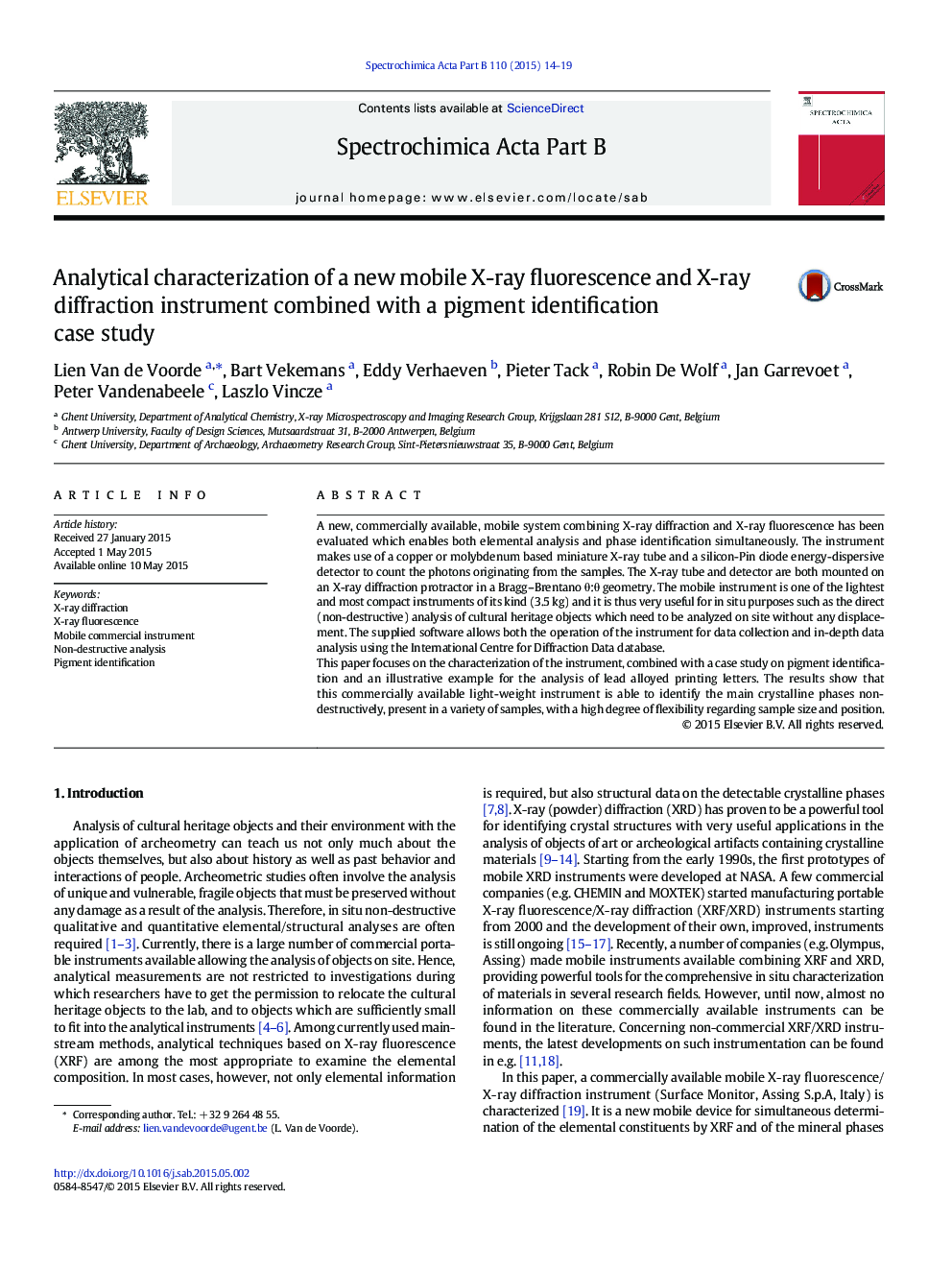| Article ID | Journal | Published Year | Pages | File Type |
|---|---|---|---|---|
| 1239974 | Spectrochimica Acta Part B: Atomic Spectroscopy | 2015 | 6 Pages |
•New X-ray fluorescence and X-ray diffraction instrument for non-destructive analysis•Commercially available, mobile system•One of the lightest and most compact of its kind•Characterization, data acquisition and analysis are performed.•Results of measurements on pigment model samples and cultural heritage materials
A new, commercially available, mobile system combining X-ray diffraction and X-ray fluorescence has been evaluated which enables both elemental analysis and phase identification simultaneously. The instrument makes use of a copper or molybdenum based miniature X-ray tube and a silicon-Pin diode energy-dispersive detector to count the photons originating from the samples. The X-ray tube and detector are both mounted on an X-ray diffraction protractor in a Bragg–Brentano θ:θ geometry. The mobile instrument is one of the lightest and most compact instruments of its kind (3.5 kg) and it is thus very useful for in situ purposes such as the direct (non-destructive) analysis of cultural heritage objects which need to be analyzed on site without any displacement. The supplied software allows both the operation of the instrument for data collection and in-depth data analysis using the International Centre for Diffraction Data database.This paper focuses on the characterization of the instrument, combined with a case study on pigment identification and an illustrative example for the analysis of lead alloyed printing letters. The results show that this commercially available light-weight instrument is able to identify the main crystalline phases non-destructively, present in a variety of samples, with a high degree of flexibility regarding sample size and position.
